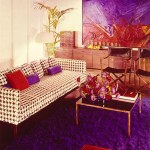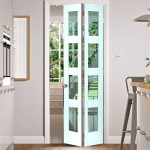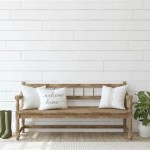Modern Style Interior Design Color Palette Ideas
Modern style interior design, characterized by clean lines, functionality, and the absence of excessive ornamentation, relies heavily on a thoughtfully curated color palette. The colors chosen serve as the foundation for creating a cohesive and aesthetically pleasing space that embodies the principles of modernism. Understanding the nuances of different color combinations and their impact on the overall atmosphere is crucial for successful modern interior design.
The modern style, in its purest form, often favors neutral colors. This preference stems from the desire to create a sense of spaciousness and light, allowing the architectural elements and furniture to take center stage. However, the application of color in modern interiors is not limited to monochrome schemes. Strategic use of accent colors, combined with variations in textures and materials, can introduce depth and personality without compromising the clean and uncluttered aesthetic.
Neutral Foundations: Grays, Whites, and Beiges
The cornerstone of many modern color palettes is a foundation of neutral colors, primarily grays, whites, and beiges. These hues provide a versatile backdrop that allows for flexibility in furniture selection and accessory choices. They also contribute to the sense of calm and serenity often associated with modern design. The specific shade of neutral chosen can significantly impact the overall feeling of the room.
Whites, for example, can range from cool, crisp tones to warmer, creamier shades. Cool whites are often favored in minimalist spaces, enhancing the feeling of openness and airiness. Warmer whites, on the other hand, can add a touch of softness and comfort, preventing a room from feeling sterile. Similarly, grays can range from light, almost-white tones to deep, charcoal hues. Lighter grays create a sophisticated and understated backdrop, while darker grays can add a sense of drama and sophistication to a space.
Beiges offer a warmer alternative to grays and whites, providing a neutral foundation with a subtle earthy quality. Beige tones can range from pale sand to deep taupe, each contributing a different level of warmth and richness. When selecting a beige, it's essential to consider the undertones, as some beiges can appear pinkish, yellowish, or greenish depending on the light and surrounding colors.
The key to using neutral colors effectively is to incorporate variations in texture and material. For instance, a white living room can be brought to life with a combination of smooth painted walls, a plush wool rug, and linen upholstery. This interplay of textures adds visual interest and prevents the space from feeling flat or monotonous. Furthermore, the use of metallic accents, such as brushed nickel hardware or polished chrome lighting fixtures, can add a touch of glamour and sophistication to a neutral color scheme.
Accent Colors: Strategic Pops of Personality
While neutral colors form the foundation of many modern interiors, the strategic use of accent colors is essential for injecting personality and visual interest. Accent colors should be carefully chosen to complement the neutral backdrop and enhance the overall aesthetic of the space. The choice of accent colors can also reflect the personal preferences of the occupants and create a sense of warmth and individuality.
One popular approach is to use a single, bold accent color throughout the room, such as a vibrant shade of blue, green, or yellow. This color can be incorporated through artwork, throw pillows, rugs, or even a statement piece of furniture. The key is to use the accent color sparingly, allowing it to stand out against the neutral backdrop without overwhelming the space. For example, a gray living room could be enlivened with a few pops of bright yellow, bringing a sense of energy and optimism to the room.
Another approach is to use a range of complementary colors, creating a more nuanced and layered effect. This requires a deeper understanding of color theory, as it involves selecting colors that harmonize well together. For instance, a beige bedroom could be accented with shades of blue and green, creating a calming and serene atmosphere. The blue could be incorporated through bed linens and curtains, while the green could be introduced through plants and decorative accessories.
When selecting accent colors, it's important to consider the existing architectural features of the room. For example, if the room has exposed brick walls, warm accent colors like earthy reds and oranges can complement the natural texture and color of the brick. Similarly, if the room has large windows with a view of nature, cool accent colors like blues and greens can enhance the connection to the outdoors.
Furthermore, the use of natural materials, such as wood, stone, and leather, can serve as natural accent colors. These materials introduce warmth and texture to the space, adding depth and character to the overall design. For example, a white kitchen can be warmed up with the addition of wooden countertops or a stone backsplash.
Monochromatic Schemes: Sophistication and Depth
A monochromatic color scheme, which involves using different shades and tints of a single color, can be an effective way to create a sophisticated and cohesive modern interior. This approach relies on the principle of tonal variation, where different values of the same hue are used to create depth and visual interest. A monochromatic scheme can be particularly effective in creating a sense of calm and serenity, as it minimizes visual clutter and promotes a sense of harmony.
For example, a monochromatic gray living room could incorporate a range of gray tones, from light, almost-white grays to deep, charcoal grays. The walls could be painted a light gray, while the furniture could be upholstered in a medium gray. Accents, such as throw pillows and rugs, could be in darker shades of gray, creating a sense of depth and dimension. The key to success with a monochromatic scheme is to vary the textures and materials to prevent the space from feeling flat or one-dimensional.
Another option is to use a monochromatic color scheme with a subtle accent color. For instance, a monochromatic blue bedroom could be accented with touches of white or silver. The walls could be painted a light blue, while the furniture could be upholstered in a darker shade of blue. White bed linens and silver accents could add a touch of brightness and contrast, preventing the space from feeling too heavy or overwhelming.
When working with a monochromatic color scheme, it's important to pay attention to the undertones of the colors. Even within the same hue family, colors can have different undertones, such as warm or cool. Mixing colors with different undertones can create a discordant effect, so it's best to stick to colors with similar undertones. For example, if you're using a warm shade of gray, make sure that the other grays in the room also have warm undertones.
Lighting plays a particularly important role in a monochromatic space. The way that light interacts with different shades and textures can dramatically impact the overall feeling of the room. Natural light is ideal for bringing out the nuances of a monochromatic color scheme, but artificial lighting can also be used effectively. Consider using a combination of ambient, task, and accent lighting to create depth and visual interest.
In conclusion, selecting the right color palette is paramount in achieving a successful modern style interior. Whether it be the subtle sophistication of neutral foundations, the carefully considered pops of accent colors, or the depth and harmony of monochromatic schemes, the choices made will significantly impact the overall aesthetic and atmosphere of the space. Careful consideration of color theory, texture, material, and lighting will ensure a cohesive and visually appealing modern interior.

Color Palette For Home 12 Combos Designers Love Havenly Interior Design Blog
:strip_icc()/101912857-2add7c1aecd94670bb5e250ae7bf6138.jpg?strip=all)
How To Use Modern Colors For Sophisticated Calming Decor

Modern Design Style Paint Colors

Color Palette For Home 12 Combos Designers Love Havenly Interior Design Blog

Color Palette For Home 12 Combos Designers Love Havenly Interior Design Blog
:max_bytes(150000):strip_icc()/Gandy_blackandwhitelivingroom_by_LaquishaLove-5511918dd2fc4caebf306c51c0e7e2dc.jpg?strip=all)
9 Interior Color Schemes Design Pros Swear By

8 Neutral Color Palettes Designers Swear By Decorilla Interior Design

Color Palette For Home 12 Combos Designers Love Havenly Interior Design Blog

8 Neutral Color Palettes Designers Swear By Decorilla Interior Design

9 Ways To Incorporate Modern Interior Design Style In Your Home Foyr
Related Posts








